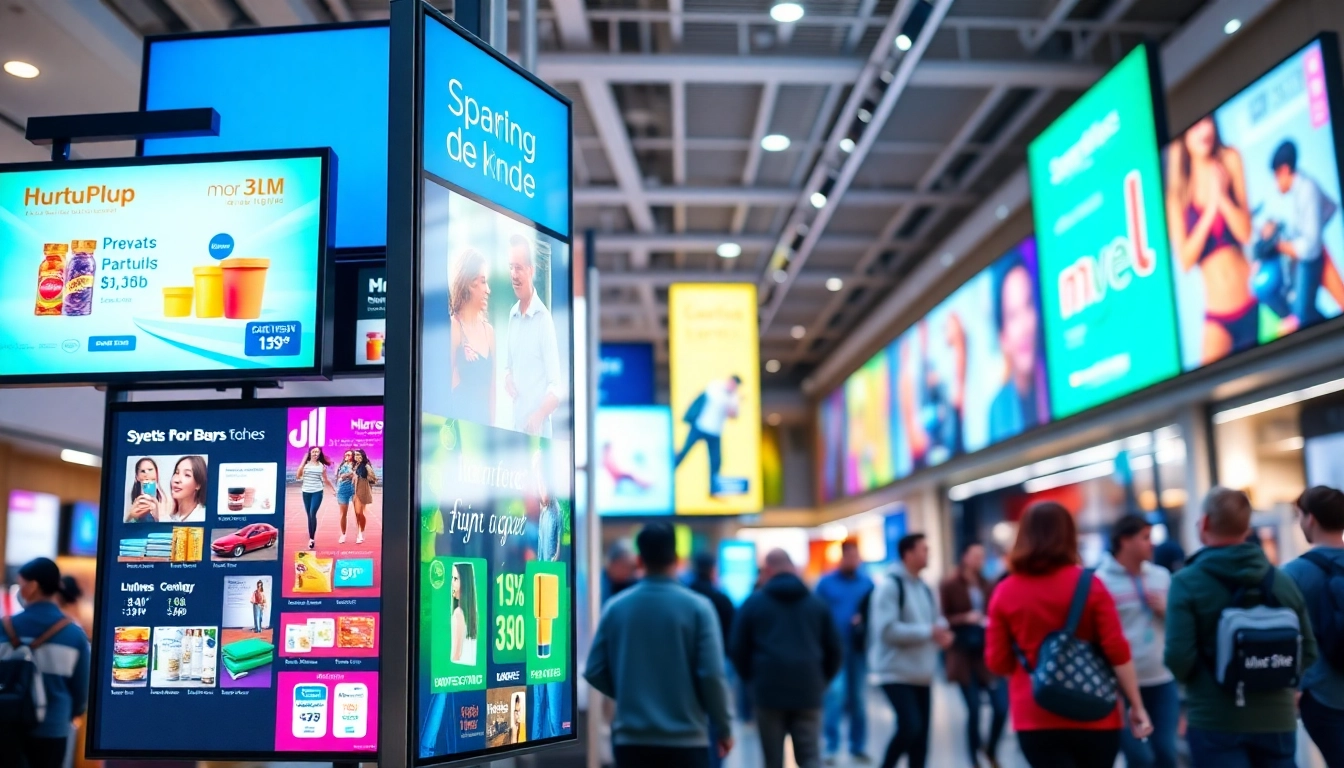
Enhancing Customer Engagement with Digital Advertising Boards
Understanding Digital Advertising Boards
Definition and Purpose
Digital advertising boards are electronic displays used for advertising or informational purposes in various environments including retail spaces, events, and public areas. These boards allow businesses to present dynamic content such as promotions, videos, and announcements in real-time.
Unlike traditional static signs, digital boards provide flexibility and immediacy. Advertisers can update their content on-the-fly, tailoring messages to suit different audiences and seasonal campaigns. In this fast-paced world, digital advertising boards offer a versatile solution to engage consumers more effectively.
How They Work
Digital advertising boards function through a combination of hardware and software. At their core, they consist of a display screen (commonly LED or LCD), a media player, and management software. The media player streams content from a connected source, while the software enables users to manage what is displayed.
Content can be uploaded remotely through cloud-based services or localized networks, allowing for seamless updates irrespective of location. Advanced boards may offer interactive capabilities such as touch-screen functionalities, enhancing customer engagement and promoting interaction.
Benefits of Digital Boards for Businesses
Implementing digital advertising boards brings numerous advantages:
- Real-Time Updates: Businesses can change advertisements quickly to react to market conditions or promotional events.
- Increased Engagement: Eye-catching visuals and motion capture attention more effectively than static signs.
- Cost-Effectiveness: Although initial costs may be higher, the need for printing and physical signs reduces over time.
- Audience Targeting: Businesses can tailor messages based on demographics, time of day, or current promotions.
Types of Digital Advertising Boards
Indoor vs. Outdoor Displays
Digital advertising boards can be classified into indoor and outdoor formats:
Indoor Displays: Typically used in retail environments, shopping malls, and airports, these displays are designed for low-light environments. They focus on providing informational content, promotional materials, and advertisements tailored to the indoor audience.
Outdoor Displays: Built to withstand the elements, outdoor displays are usually brighter and larger to ensure visibility in sunlight. They are commonly used for billboards, transit advertising, and large event screens where high visibility is crucial.
Static vs. Dynamic Content
Digital advertising boards allow for two main types of content:
Static Content: This includes still images, text, and basic graphics which do not change frequently. Static content is often used for brand messages or essential information.
Dynamic Content: This type incorporates animations, videos, and live data feeds. Dynamic content is more engaging and can convey complex messages much more effectively. Examples include stock market updates, social media feeds, or real-time sports scores.
Customizable Options
Many digital boards offer customizable features to improve user engagement and tailor content delivery. These can include:
- Software Customization: Customizable software allows businesses to adapt content strategies, including scheduling content for particular times or events.
- Physical Customization: Organizations can choose from various screen sizes and designs that fit their branding or specific location needs.
- Interactive Elements: Touchscreen interfaces can make the advertising board interactive, allowing consumers to engage directly with the content for a more immersive experience.
Effective Content Strategies for Digital Advertising Boards
Crafting Engaging Ads
To maximize the effectiveness of digital advertising boards, creating compelling and engaging ads is vital. Businesses should use vibrant colors, high-quality images, and minimal text to ensure messages are quickly understood. Utilizing strong calls-to-action can also drive consumer engagement.
For instance, a restaurant might feature a daily special on their board with an enticing image and a brief description, prompting customers to try out the offer.
Utilizing Visual Hierarchy
Effective visual hierarchy ensures that viewers can quickly identify the most important information. Businesses should prioritize key messages, placing them prominently where they will attract the most attention. Utilizing contrasting colors and typography sizes can guide the viewer’s focus effectively.
For example, the primary message could be displayed in larger font sizes with vibrant colors, while secondary information, like operational hours, can be in smaller text, ensuring that it is still readable.
Data-Driven Content Decisions
Leveraging analytics can enhance the effectiveness of digital advertising strategies. By employing data analytics tools, businesses can understand viewer behaviors such as engagement levels, colors/styles that attract more awareness, and optimal times for displaying specific content. Using this data, companies can continually refine their advertising approach to enhance overall effectiveness.
Best Practices in Digital Advertising Board Implementation
Location and Placement
The location and placement of digital advertising boards significantly impact their effectiveness. Engaging foot traffic areas such as entrances, lobbies, or waiting areas can yield the best results. Moreover, it’s crucial to consider the line of sight; boards should not be placed too high or in positions where viewers must strain to see the content.
Integrating with Existing Advertising Strategy
Digital advertising boards should complement existing marketing strategies rather than function in isolation. Coordinating launches, promotions, and overall messaging across digital and traditional platforms can amplify marketing efforts and create a coherent brand strategy.
Regular Monitoring and Updates
After deploying digital boards, businesses should continuously monitor their performance. Regularly updating content and reviewing analytics will ensure that the messages remain relevant and effective. Keeping the audience engaged requires refreshing content based on upcoming events, promotions, or trends.
Future Trends in Digital Advertising Boards
Technological Innovations
As digital advertising technology evolves, businesses can expect several innovations to impact advertising strategies. Enhanced displays featuring higher resolutions, augmented reality capabilities, and AI-powered content management systems will create more interactive and tailored advertising experiences.
Personalization and AI Integration
Personalization represents a major future trend in digital advertising. Integration with AI allows for tailored content delivery, assessing viewer demographics and preferences in real-time. This capability can lead to more relevant messaging, thereby increasing engagement and conversion rates.
Sustainability in Advertising Displays
With growing concerns over environmental impacts, sustainable practices are becoming a priority. Future trends suggest an increase in energy-efficient displays and sustainable materials for hardware. Companies will look to reduce waste and energy consumption while maintaining quality and performance.
